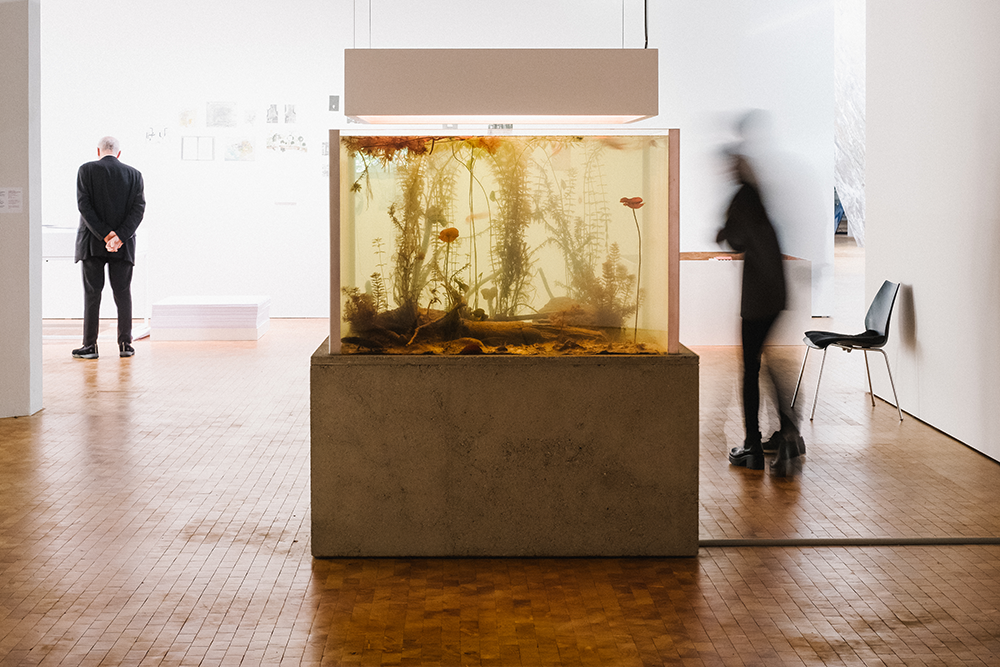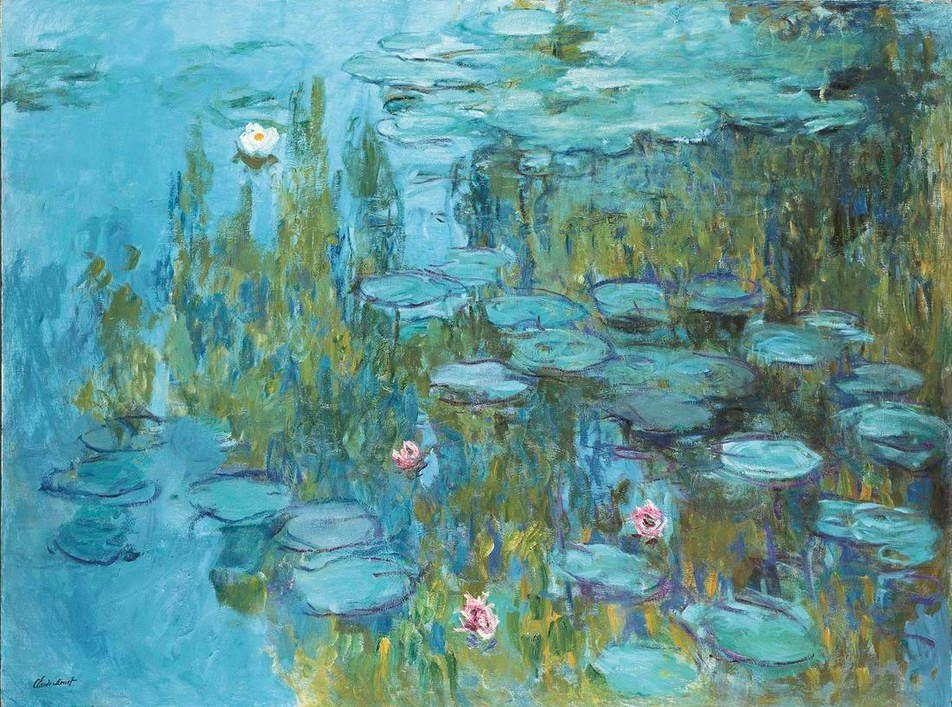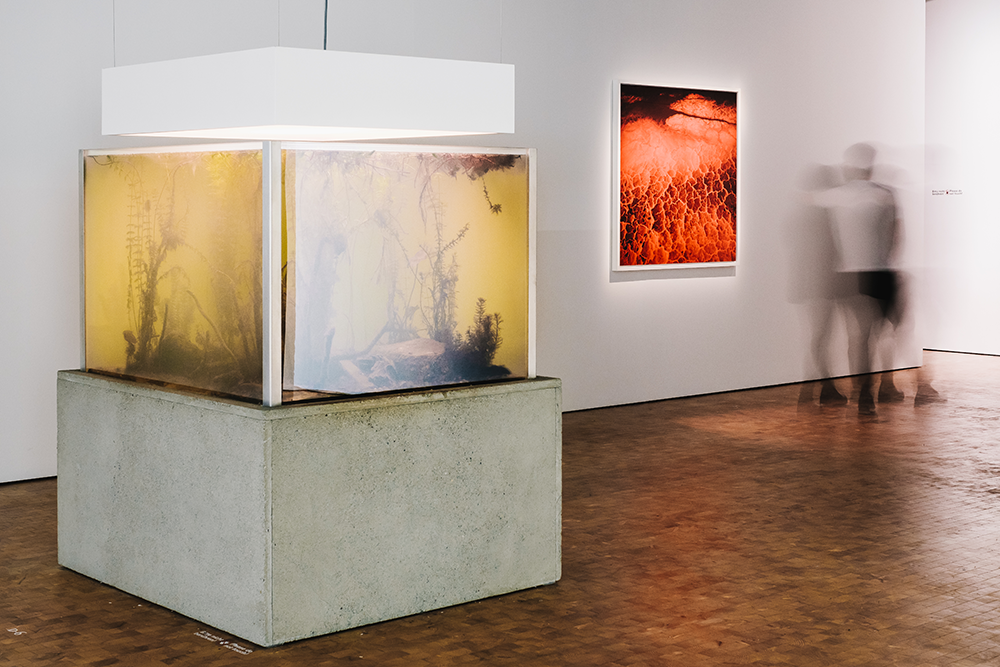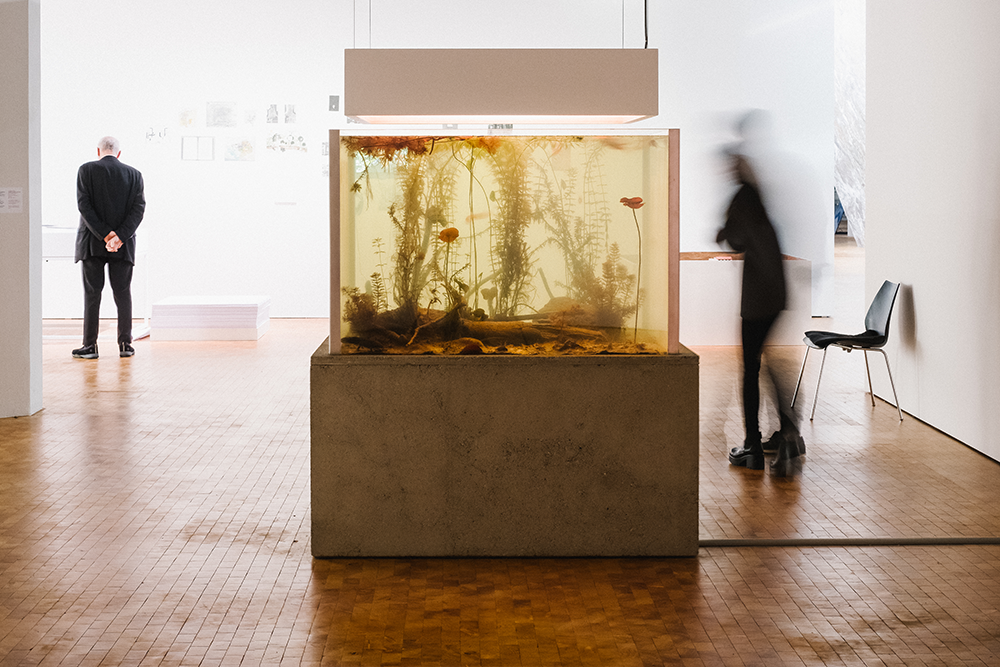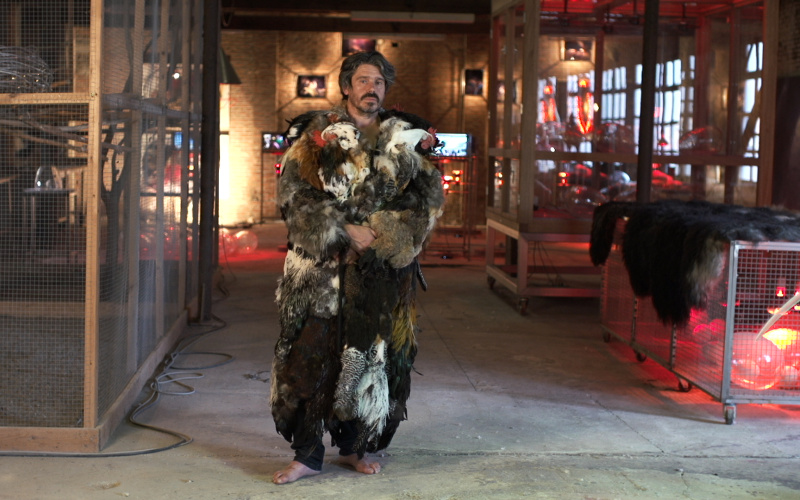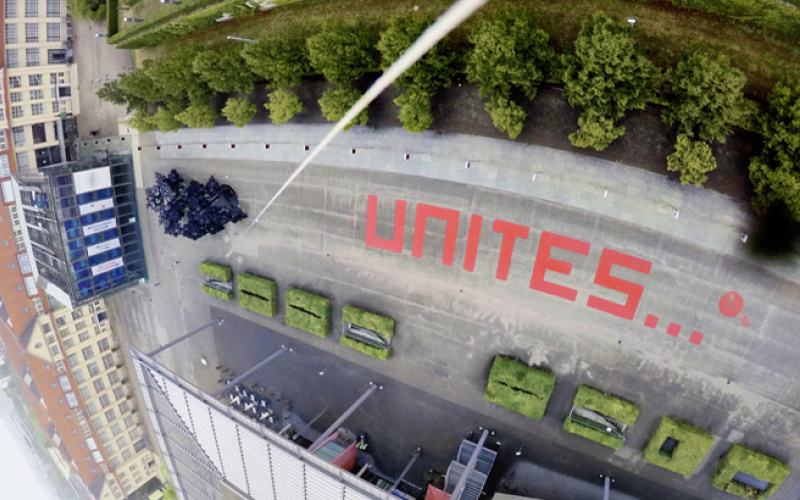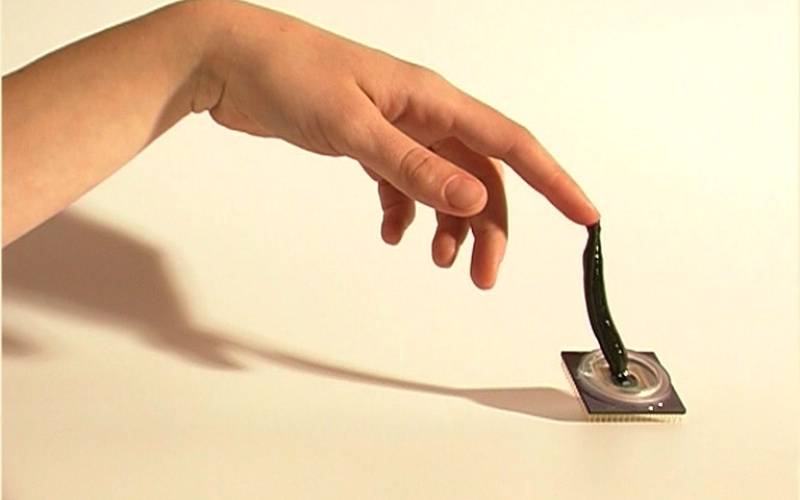Monet’s Water Lilies in the aquarium
Pierre Huyghe’s »Nymphéas Transplant« - an example of resetting modernity
BY JANA BERNHARDT
Pierre Huyghe showcases Monet's Water Lilies in new aesthetics, thus resetting our usual visual experience: with »Nymphéas Transplant«, he resets our focus onto modernity.
In the beginning was Monet – at least, at the beginning of Impressionism. When Claude Monet painted »Impression, soleil levant« in 1872, he thus laid the foundation for a new worldview. From the title of the work developed not only the name of the representatives of this style, the Impressionists, but with them also one of the first art trends that today we consider as part of modernity and that, at the time, was regarded as a synonym for modern art for a period.
Monet’s impressionistic view
Monet is known above all for the views of his garden in Giverny, which show it in all seasons. The depicted water lilies study and the version of the Japanese bridge are just two of his motifs that he showcased with tempestuous colours and strong brush strokes. He repeatedly depicted his colourful impressions and eternalised the beauty of nature with his paintings.
In the exhibition »Reset Modernity!«, which the ZKM presented from 16 April to 21 August 2016, the work of Pierre Huyghe gives space to Monet. With »Nymphéas Transplant«, he transfers, in the truest sense of the word, a fragment of Impressionist inspiration into the museum space. However, what one encounters in Pierre Huyghe’s biotope has scarcely anything to do with Monet’s world of colour. The water is opaque and oscillates only in various nuances of brown and green instead of in clear shades. Individual fish and axolotls swim around sedately between the roots of the water lily leaves. The aesthetics we know from Impressionist painting seems completely absent.
Resetting the focus
In this connection, the temporary blurring of the aquarium glass also seems like a resetting of the focus. An irritation vaguely reminiscent of the ambiguities of brushwork that, in the case of Monet’s paintings, the observer notices only if he goes very close to the painting.
Like an embodiment of temporality, the lighting of the water cuboid varies and summarises what Monet painted in each season in one exhibition day. We encounter Monet’s representation spectrum reduced to a few hours – and broken down to a conceptual level.
The biotope is elevated into art and the associated impressionistic ideas retreat into the background. Pierre Huyghe borrows directly from Monet’s Nymphéas with the title and presents to us in the aquarium the flora and fauna of his famous garden. He transplants, as the title suggests, the Nymphéas into the museum space but also into contemporary art and resets the observer’s expectations with the contrary aesthetics.
About the Author
Jana Bernhardt studies art history and German studies in Münster. During the summer of 2016, she worked in the marketing department of the ZKM and was not only impressed by the aesthetics of the installation, but also by its small inhabitants.
Category
News Category
- tracks & records
